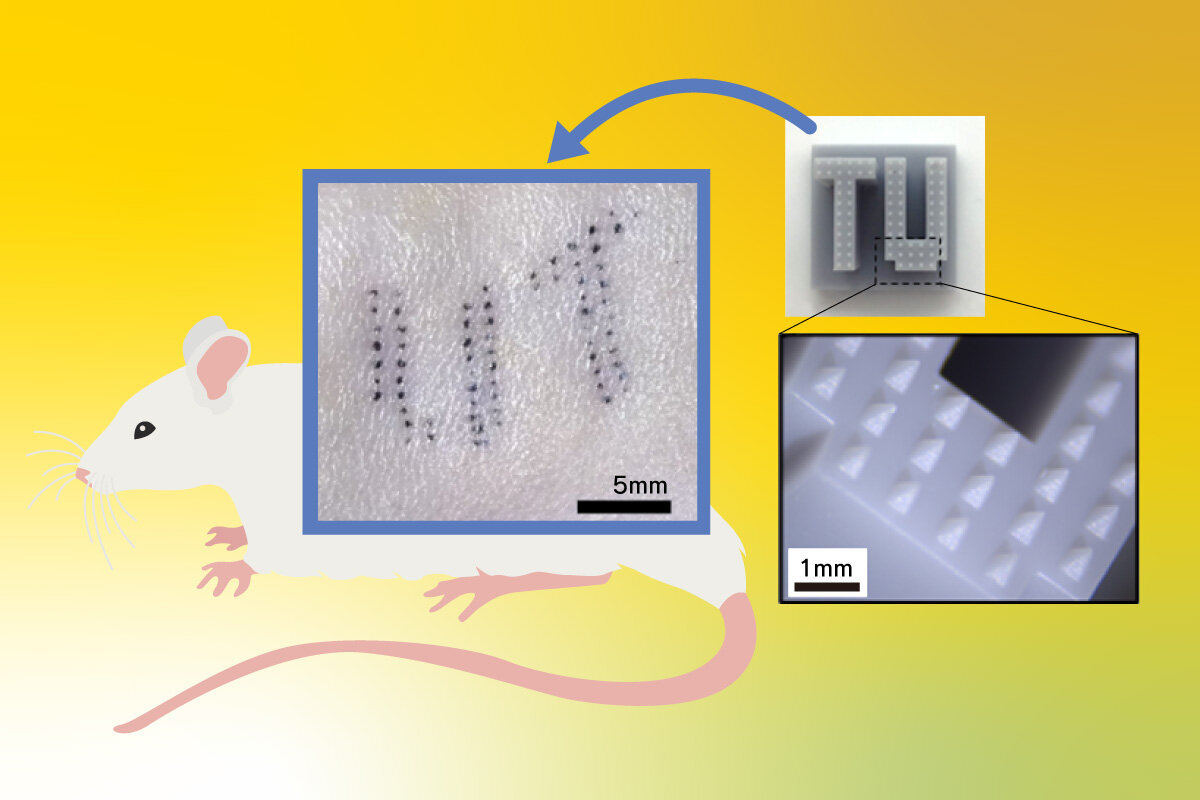Ensuring your pet has proper identification is crucial in the event they go missing. Traditional methods like ear punching, RF chips, QR code tags, GPS tracking, as well as smart collars have been employed for animal identification.
However, despite their use, these old-fashioned methods have drawbacks. Ear tags can get lost or damaged, and RFID chips need invasive insertion and specialized readers. Moreover, these methods can be distressing for animals.
Fortunately, technology is introducing gentler and more intelligent alternatives!
The University of Tokyo researchers showcased a novel “bio-tagging” technique, utilizing an array of microneedles with visible alphanumeric characters. These microneedles are directly inserted into the skin, providing permanent animal identification. The method employs a dissolvable microneedle patch to deliver dye molecules.
A kinder and safer method for labeling animals
As the patch is pressed onto the skin, the microneedles penetrate the outer layer without reaching the nerves beneath. These needles then dissolve, releasing the medication into the interstitial fluid between the skin cells.
Researchers utilized microneedle array patches (MAPs) with needles less than 1 mm long, forming a matrix using custom polydimethylsiloxane moulds. These moulds, easily produced from positive 3D-printed resin plugs, enable the creation of desired symbols, akin to dot-matrix printers, for tattooing onto animals.
Tests demonstrated that the biotags stayed easily readable on the skin even a month after application.







